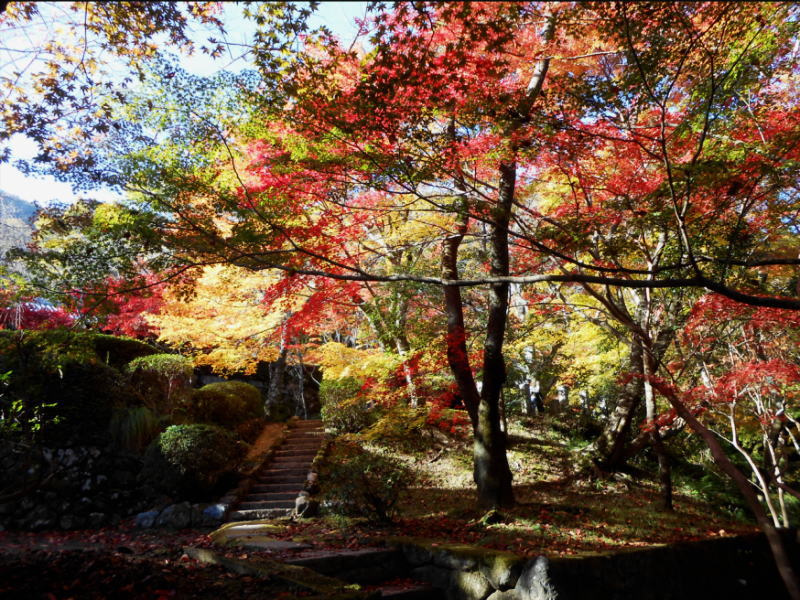光明寺
Kōmyōji Temple
Built by Master Rensei, a disciple of Master Hōnen (the founder of Jōdo School) in 1198, Kōmyōji Temple serves as the resting place of the latter. Passing through the Main Gate and taking a left, large vivid natural brocades extend, forming a fascinating tunnel over the approach path. It’s called “Momiji Path” and was created in 1854 on Rensei’s 650th anniversary. Approx. 250 maple trees narrowly planted along a 200-m path remind us of picturesque Yuzen Dyeing cloths (a traditional dyeing art in Kyoto).
ACCESS
Kōmyōji Temple is located in Nagaoka Kyo City, Kyoto Prefecture.
JR Nagaoka Kyo Station --> West Exit --> Hankyu Bus Stop No. 2 --> Route 20 or 22 --> Approx. 25-min. ride --> Asahi Ga Oka Home Mae (旭が丘ホーム前) Stop.
(https://komyo-ji.or.jp/)
|
勝持寺(花の寺)
Shōjiji (Hana No Tera) Temple
Shōjiji Temple, a.k.a. Hana No Tera (Temple of Flowers), is a historic old temple built by Master Jinben (the founder of mountain asceticism in Japan) based on the command of Emperor Temmu in 679. Later in 791, the then emperor Kammu ordered Master Denkyo (or Saicho, the founder of Tendai School) to rebuild the temple buildings and pagoda. Finally, the master completed the restoration by reverently carving a buddha image called “Medicine Master and King of Lapis Lazuli Light” and consecrating it as the temple’s main image.
ACCESS
Shōjiji Temple is located in Kyoto City.
JR Muko Machi Station or Hankyu Higashi Muko Station --> Hankyu Bus --> Minami Kasuga Cho (南春日町) Stop --> 1.1km on foot
(or)
Hankyu Katsura Station --> West Gate --> Hankyu Bus Route West 2 --> Rakusai Koko Mae (洛西高校前) Stop --> 1.8km on foot
(http://www.shoujiji.jp/)
|
|
















